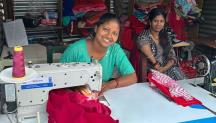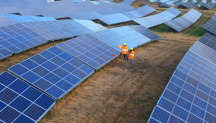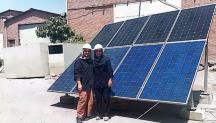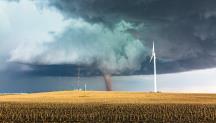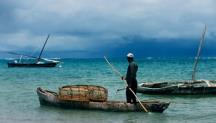

Decentralised Hydropower Brings Light and Hope to Remote Communities in Papua New Guinea Amid Ongoing Rescue Efforts in Enga
Newsletter
In the lush landscapes of Papua New Guinea, darkness after sunset was accepted as daily reality by the country’s remote communities. This is especially poignant in light of the human suffering following a massive landslide in the highlands of the Enga province, located in the north of the island nation.
Amid such challenges and ongoing rescue, decentralised hydropower solutions are bringing hope and tangible benefits to communities in Mount Hagen and Hogave, hundreds of kilometres away from Enga.
What started as a form of appreciation from a foreign foundation for the Hogave tribe’s continuous efforts in forest conservation has become a community achievement and source of hope for improved livelihoods. When the 20 kilowatt (kW)-micro-hydro system started supplying electricity to the village facilities including the school, locals immediately experienced previously unimaginable benefits.
Kumoro Kima, who has taught for nine years at the village elementary school, was able to trim the long hours he used to spend for class preparation with the help of a mobile phone and tablet. He could charge the devices and use them as teaching aids.
The availability of electricity certainly improved his students’ learning process. Lighting allows them to extend the hours devoted to studying in the evening, and the hydropower plant raised their awareness of the role of water in generating electricity. “We told them that this is thanks to the power produced from the water in the village,” says Kumoro Kima.
The micro-hydro plant not only supplies clean and reliable power, but it is also cost effective. As explained by the Founding Director of the Hogave Conservation Centre who is also one the of the tribe’s elders, David Kima, “Previously, we used fuel from diesel generators, which constantly runs out quickly, so we had to send a vehicle up to Goroka town to transport the fuel. That's 63 km, or about a two or three-hour drive. With the micro-hydro, the timing and costs of going up to town and coming back were reduced and cut down.”
Cost-efficiency certainly means a lot for small communities in massive need of economic growth. Decentralised renewable energy solutions such as the one in Hogave offer a wide range of socio-economic benefits to communities.
In Mount Hagen, in the Western Highlands of the country, another small hydro power plant is changing the lives of the community living around the Rondon Ridge Lodge. Built as an eco-resort, the lodge has been using clean electricity supplied by a mini-hydro plant since its establishment in 2005.
The construction of the 120 kW-system leveraged local talents and resources as it was done completely by locals. Over 12 months of construction, the project built local skills and created approximately 30 jobs. Upon completion, the mini-hydro system not only provides cost-efficient clean energy but also transforms the lives of local communities.
The system continues to benefit the surrounding community as it sustainably supplies free electricity to the lodge and its vicinity, consequently boosting tourism in the area. The lodge hired locals for the power system’s operation and maintenance, as well as to support the lodge’s operation and tourism activities. Currently, 95% of the lodge’s staff are locals.
Women account for 20% of the employees. Though still a modest share, this has indirectly improved gender and social equity in the area. Kere Kila, a local woman who serves as a supervisor at the lodge, observed the positive ripple effects of the renewables-powered tourism on local economies, “Since I started working at the lodge, I see local women really benefit from the business. They get more income because they can sell their handicrafts to the tourists.” It has been reported that local vendors earn approximately over USD 5000 annually.
The projects in Hogave and Mount Hagen are prime examples of how decentralised renewable energy solutions can catalyse sustainable development in last-mile communities. But they are just a fraction of what Papua New Guinea can potentially deploy. Out of its theoretical maximum 251 gigawatts of hydropower potential, the country only generated 327 megawatts (MW) of hydropower by 2023. Still, Papua New Guinea was able to add 66 MW last year after capacity had been at a standstill for years.
There is much more to be done, especially with the Government aiming for an ambitious target of 70% renewables generation by 2030. As Bob Bates, the owner of the lodge said, “There should be hundreds of these mini-hydro plants around the country, especially in the highlands. We've got the water, we've got the height, and we've got the skills to install them.”
In light of the hardships and devastation endured by communities in Enga Province and Papua New Guinea as a whole, these renewable projects offer a beacon of hope and a path toward sustainable development.
